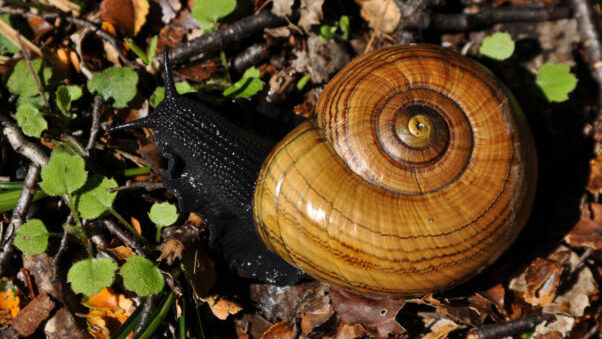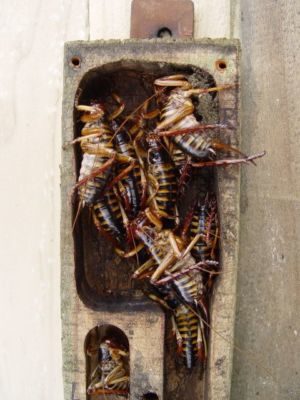If you want to measure the abundance of birds in a forest you can count how many you see or record the birdsong you hear. But how do you monitor whether your predator control is increasing invertebrate diversity?

As some of our larger invertebrates such as tree weta and stick insects are likely to be predated by rats, it would be useful to measure whether rat control operations have led to an increase in invertebrate numbers. Invertebrate monitoring isn’t easy however.
Invertebrates aren’t easily seen and our forest insects don’t generally attract attention to themselves by making a lot of noise. Snails aren’t known to be noisy either. Pitfall traps or a general scuffle around in the leaf litter may unearth the ground-dwelling ones, but tree weta and stick insects may be lurking much higher in the forest. Weta motels tempt weta to move in where they can be more easily spotted – but it can take 2-3 years before they decide to take up residence in your carefully constructed, luxury weta accommodation.

In Europe and the US, one way that’s used to estimate abundance of tree-dwellers is to measure frass drop. It’s a posh way of saying – count the poo.
According to researchers Peter Sweetapple and Mandy Barron of Landcare Research, poo-counting hasn’t been used to any great extent with New Zealand’s arboreal invertebrates, so they put the methodology to the test for estimating tree weta, stick insects and land snails. Their research was published last year in the New Zealand Journal of Ecology.
“Large arboreal invertebrates are important components of forest ecosystem food webs, but can be difficult and expensive to monitor because of their inaccessibility… We assessed the practicality of, and developed protocols for, the frass-drop method to monitor the abundance of tree weta (Hemideina crassidens), stick insects (Phasmatodea) and molluscs (Mollusca) under three tree species at two sites within a New Zealand native forest.
The good news is that the method is cheap. The other good news is that tree weta, snail and stick insect frass is easily recognised (once you know what you’re looking for).
“Raw material costs for litter trays were low ($NZ 16.60 per tray) and frass (faecal material) of all three groups was distinctive and could be easily and quickly extracted from litter samples by manual sorting. Stick insect frass drop weight varied by one to two orders of magnitude between tree species and site (21–95% occurrence), but tree weta and molluscs frass was common (65–90% occurrence) under all tree species at both sites.”
The researchers also found they obtained better results from using three trays beneath each sample tree, rather than one. The method needs some refining, they say, but it’s got to be easier than climbing trees to find the weta.
“Sampling using clusters of three trays as sampling units was more efficient than single-tray sampling at achieving target levels of power for simple site-mean indices of abundance. The method has several advantages over other low-cost methods that are currently used, but requires further validation of the relationship between frass drop and invertebrate abundance in a New Zealand context.”
The full research, including a description of the methodology, is published in the New Zealand Journal of Ecology and freely available online.

